LA NAUTIQUE Early visits
Long ago in 1996
I was working with holiday-makers at that time, and my boss wanted to look at the Camping at La Nautique, thinking of future holidays, so we went to La Nautique because French people admire a business man who travels with a Personal Assistant!
He decided "maybe next year" and so we walked around La Nautique, which is on the étang of Bages et Sigean not far from Narbonne. In the leisure port, opposite the café on the quayside, we saw the great Roman anchor, and down by the water, a great slab of limestone, which I was convinced must have been Roman. 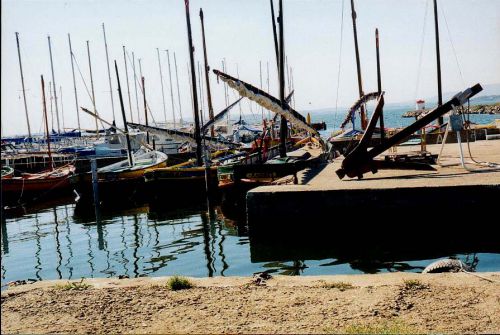
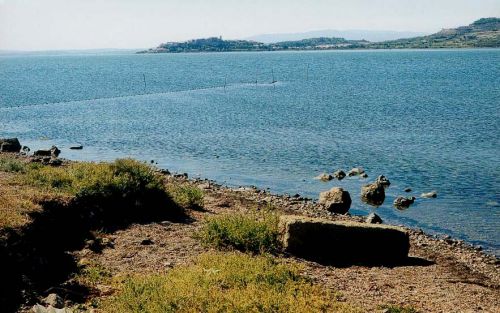
I was fascinated by the Roman history and loved the atmosphere of the sun, and the étang. But I wasn't to come back until 2008. Then there were piles of mud on the quaysides! The étang had been getting more shallow, so they were clearing the mud off the sea-bottom and as it dried more and more amphores and parts of amphores were revealed. I asked my friends; "How many strong bags are there in the car?" and came back with 3 sacks of muddy remains. Of course, La Nautique had been the port for Narbonne for over 500 years. Goods were transported in amphores. When one broke, the sailors just tossed the broken bits overboard into the water. I didn't know then, about the group called ANTEAS that had been excavating La Nautique. This picture of their reconstruction of what the "mole" was like in Roman days. 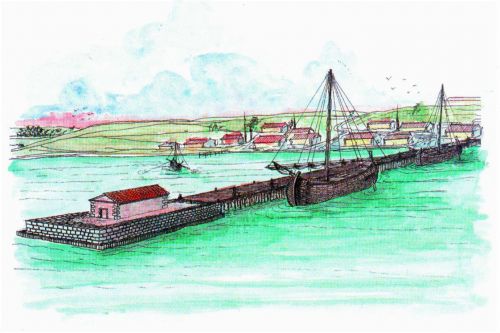
Below; what I found in the mud, remains of dolia and pottery and a beautiful base of an elegant amphore. 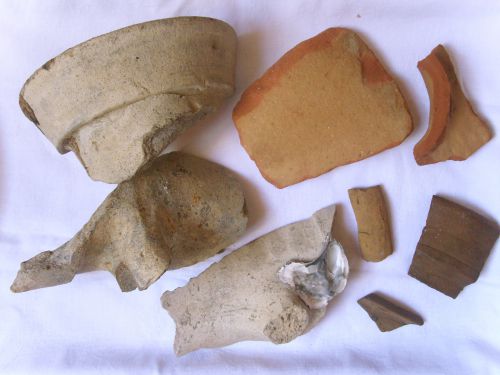
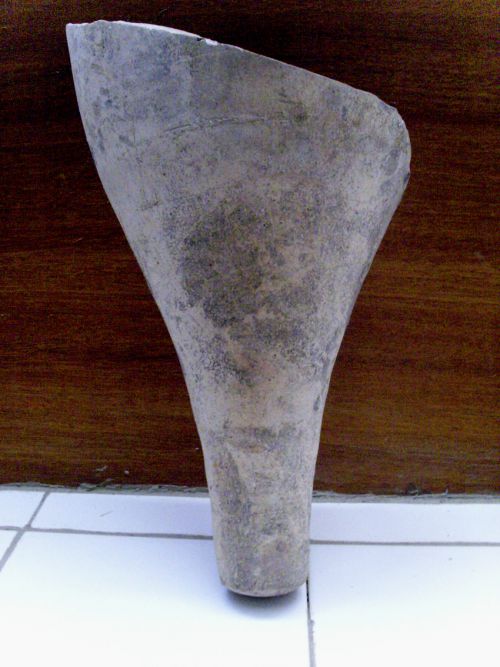
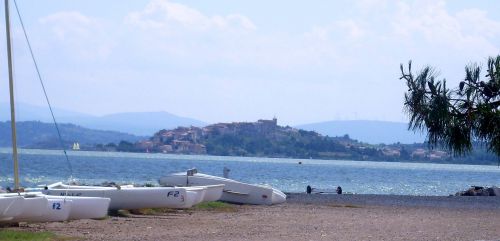
Bages across the étang, as seen from the sailing club/school at La Nautique.
11 June 2010
The local Narbonne paper, the Independent, said; "There were well antique docks at La Nautique." The article explained that a local building plot had been excavated before the construction of new houses on it. "The research took place on part of the famous pine-wood which marks the entry into La Nautique."
Find La Nautique by approaching the autoroute junction Narbonne Sud; just before the toll-gate, turn right for La Nautique. You will see the pine-wood on the left as you enter the village; that's where we found many odds and ends and the Roman wall. Archeologists have confirmed that a large warehouse was there for the storage of incoming and outgoing goods especially wine, amphores, and dolia (huge storage jars) for grain and olive oil.
But first, my friend Nicole and I went to the plasure port to the the anchor - but it had moved! No longer on the quayside by the pleasure boats and the café, it was by the sailing school. You can't miss it, it is huge, and there is a notice nearby explaining that the original is now in the archeological museum in Narbonne. 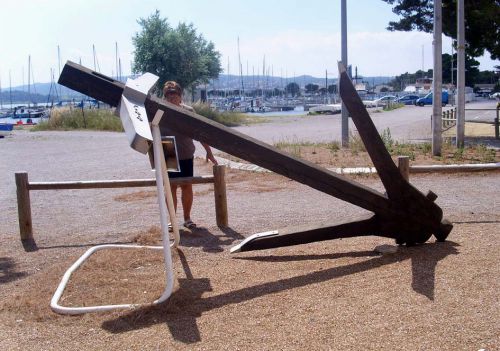
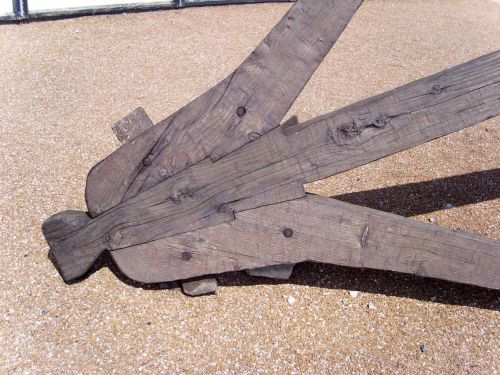
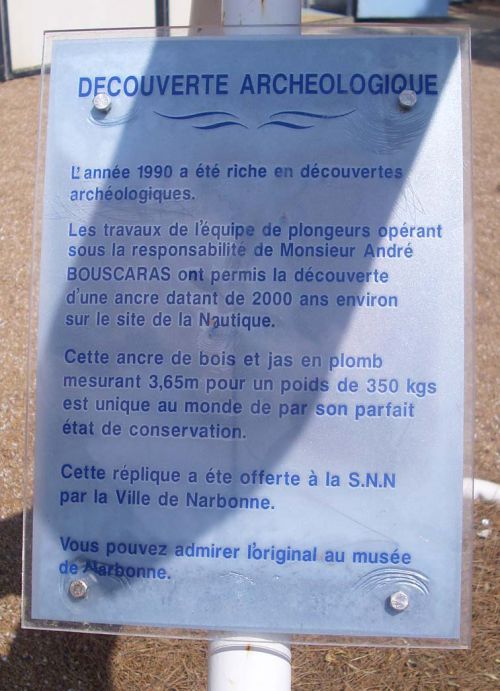
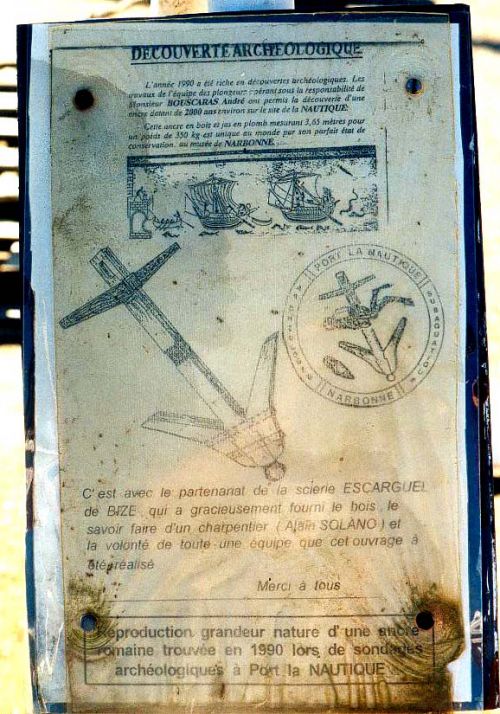
The second notice is the old one that I saw in 1996
Then, the pine forest. All the trenches had been filled in, but we saw plenty of broken roof-tiles, eveidence of a great building, sigillée pottery, poterie noir, dolia galore and very many oyster shells. 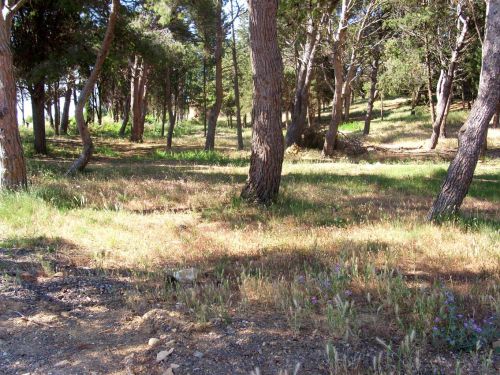
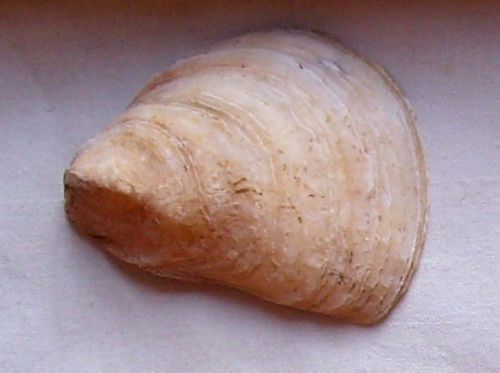
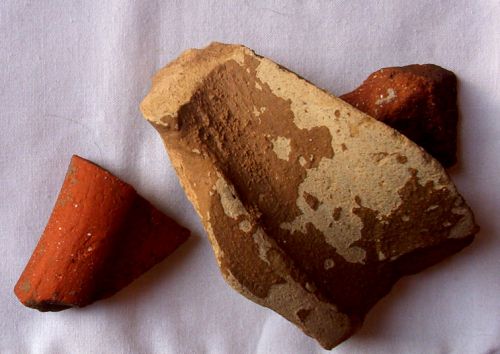
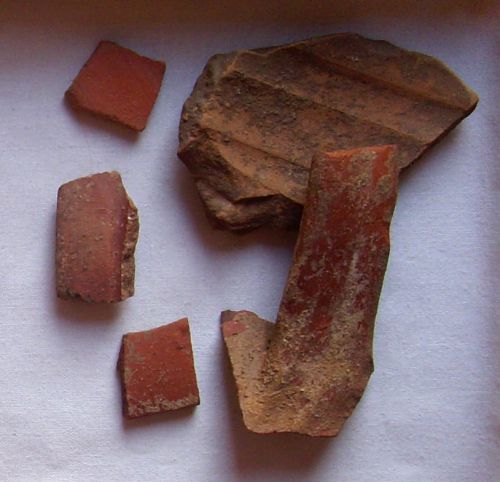
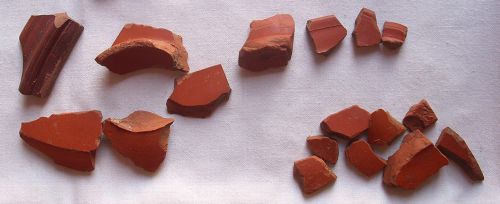
And we found a wall. "That's Roman," said Nicole, but I wasn't so certain. 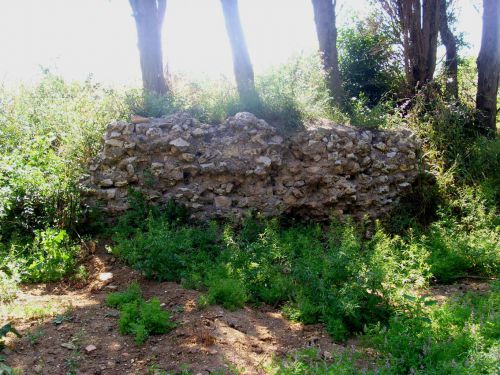
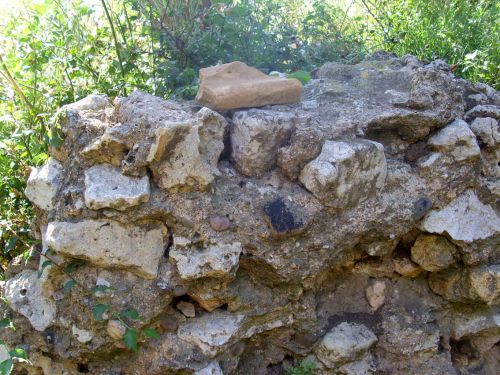
I thought the construction was a bit ordinary for a great building like a warehouse. Maybe it was a fisherman's house?
Then we had a look around. there were other remains of walls, possibly Roman, and the long line of stones marked, I felt, either a paved road or part of a wall. 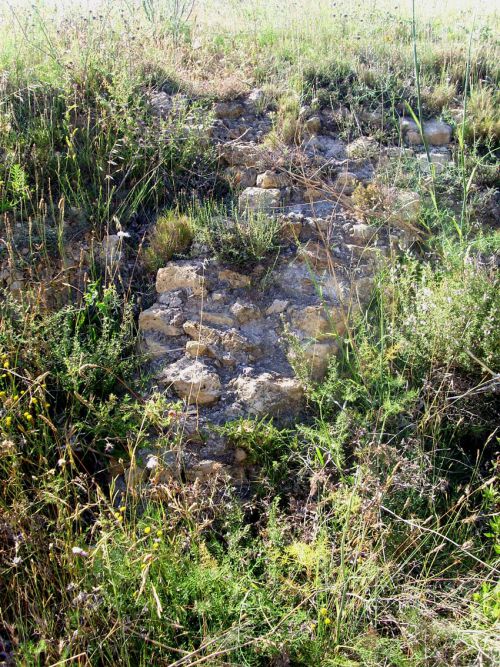
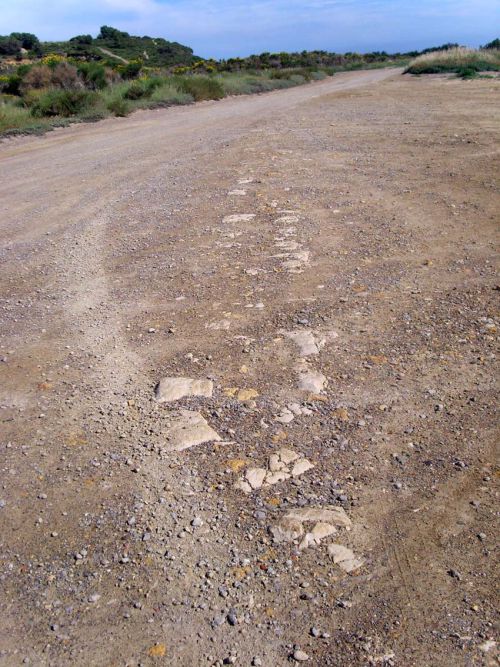
This was right beside the étang, so we walked along the water's edge and found plenty of small pottery pieces and a coin, but it was too worn to be identified. Nonetheless, I like La Nautique; the Roman history is just below the surface, either literally or metaphorically.
A Conference 19 january, 2011
There was a current of excitement in the 15th Century Salle des Synodes in the Cathedral/Hotel de Ville complex of Narbonne. What new wonders about La Nautique were going to be discovered?
Our lecturer was Corinne Sanchez, a young archeologist passionate about her work. A huge screen for transparencies and videos dominated the room.
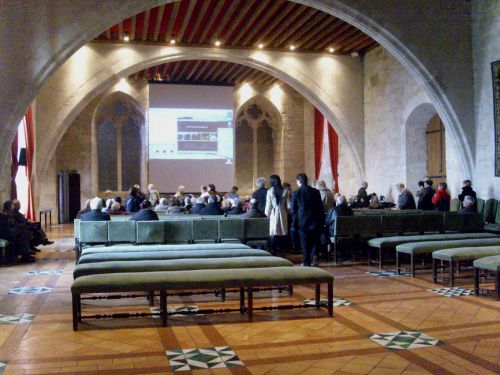
We began with excavations at Grande Castelou, 3km south of la Nautique. In Roman times it was a marsh, but there's a footpath about 200 metres inland from the sea. The archoeologists knew there was a Roman road there and a jetty but they discovered two roads, the second about 600 metres inland and many remains ; in effect, it was a satellite port of La Nautique.
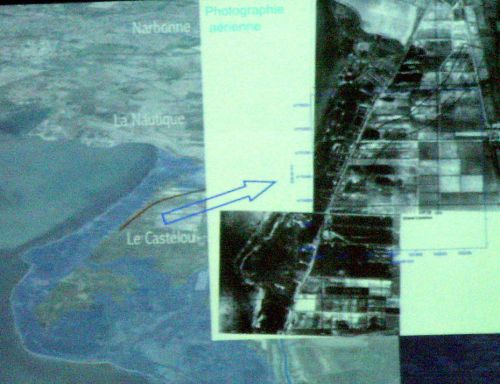
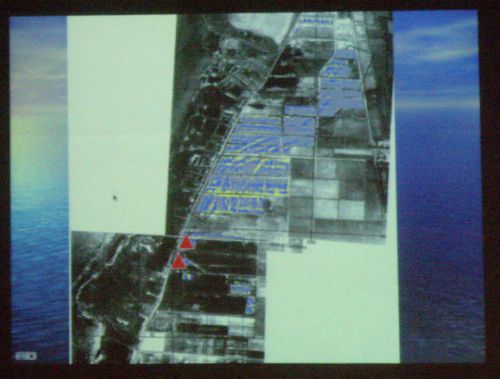
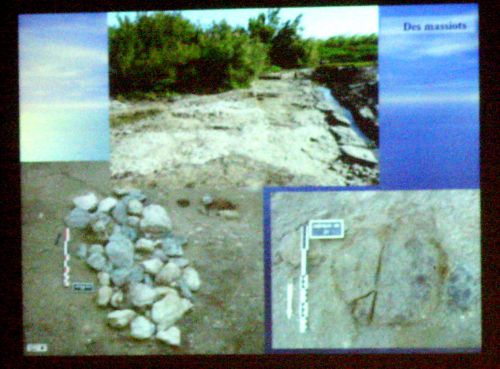
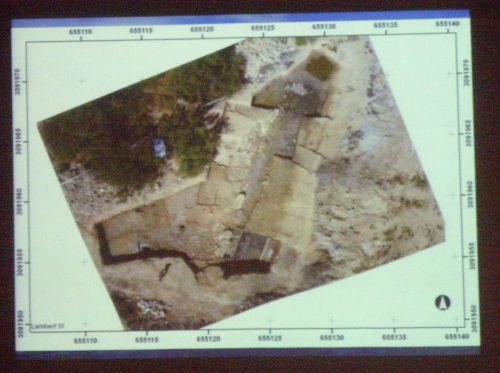

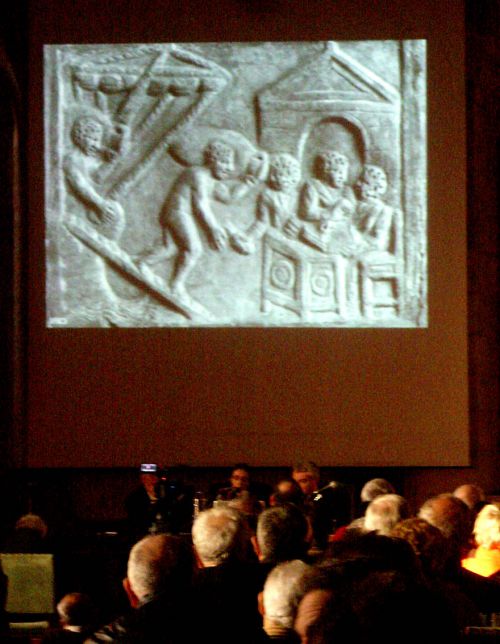
Everybody loved this carved stone showing the port at work, with the sailors unloading and the accountants waiting in their office to check the goods.
Then we saw a video about the work of geophysists, surveying the ground for hidden remains, they also did core-drillings.
Then - a picture came on the screen - it was the site I had visited last spring at La Nautique, where the archeologists had discovered a huge warehouse. The survey had been done and the digger dug down to a maximum of 3 metres, there was even a hole at the foot of the wall we saw last spring, revealing Roman walls underneath.
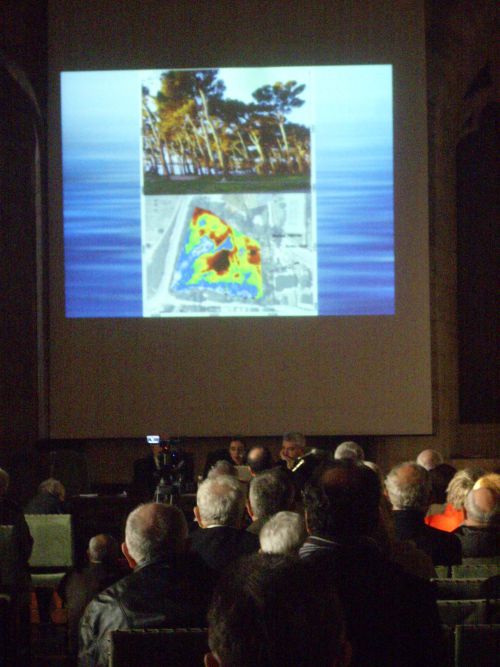
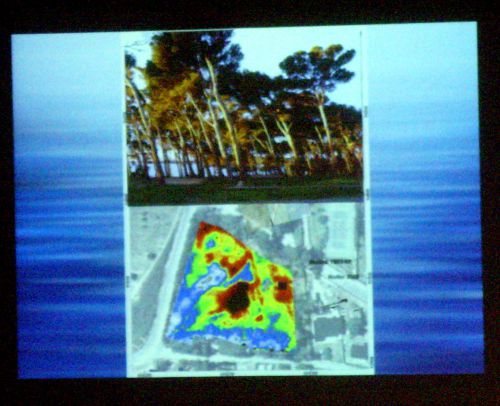
Above - the site and the echo-sounding the geophysisists had done.
The archeologists found an oven for making clay amphores, remains of amphores and sigillée pottery, and a positive mountain of oyster shells! The Romans loved oysters and these were exported into the interior of the country, all over France in fact. There were other workshops too. 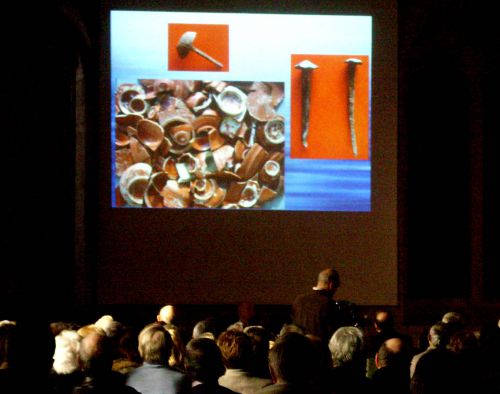
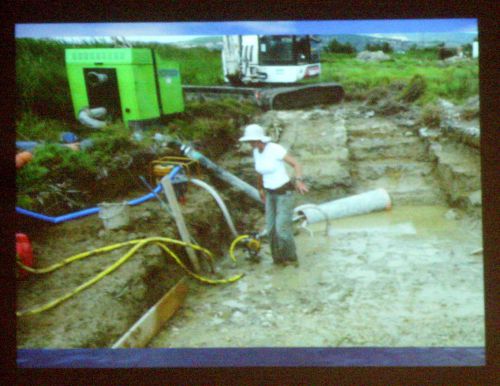
Broken sigillee found at La Nautique: on the left, it's not always very amusing working as an archeologist!
Finally, several videos demonstrated the work of the archeologists, everything was measured and their positions noted. Remains were washed and put in plastic bags. When the weather was bad, one worked between the rain and the mud!
It was a fascinating and instructive afternoon.
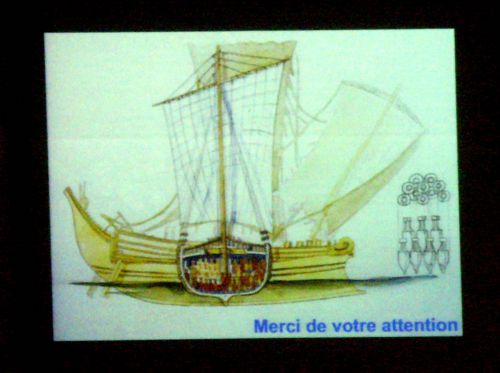
Inscrivez-vous au blog
Soyez prévenu par email des prochaines mises à jour
Rejoignez les 16 autres membres
